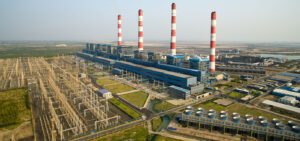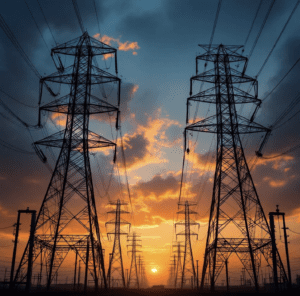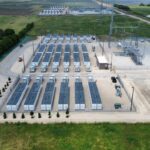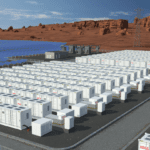Uninterruptible power supply (UPS) systems are often installed to protect critical equipment and loads from power outages, and other voltage and current problems. Many UPS systems continuously regulate the input power, thereby maintaining a constant and uniform supply of electricity. UPS systems are typically used on computer hardware or other equipment where an unexpected power disruption could cause fatalities, serious business disruption, or data loss, such as at data centers, telecommunication facilities, hospitals, and power plants.
While UPS systems have batteries and obviously store energy, they are not synonymous with standard battery energy storage systems that are commonly being added to the power grid these days. In fact, UPS systems are often not allowed to export power to the grid. However, that doesn’t mean they can’t serve a useful purpose in lowering energy bills and providing a return on investment to owners.
“Historically, UPSs are sitting there waiting for something bad to happen—they were kind of insurance devices,” Yaron Binder, vice president of Product Management with SolarEdge Critical Power, said as a guest on The POWER Podcast. “But I think there’s a growing understanding that these could also double as an energy storage system, and actually create some kind of benefit, let’s say, revenue for the customer, apart from just sitting there waiting for the power to go out.”
In the past, many UPS systems used lead-acid batteries, which were not a good fit for cycling operations. Today, however, many UPSs have lithium-ion batteries, which are much better suited to regular cycling. Therefore, there is less downside to using a UPS for more than just emergencies.
Binder said there are many clever ways to utilize UPSs. “One of the things you can do, for example, is use the UPS as a demand response component,” he said. Although, as previously mentioned, owners may not be able to export power directly to the grid, they can reduce their power demand when electricity prices spike by using their UPS to power in-house needs. This will save money when prices are high and the UPS can be recharged when power prices have returned to a lower rate. Of course, a minimum charge level must be maintained to support the UPSs main function, which is to provide power to critical equipment during an emergency.
Another innovative solution that can save owners money is to basically levelize power demand spikes using the UPS. “Sometimes you can use that battery to defer an increase in the site infrastructure,” Binder said. He referenced a hospital that he worked with where this was done. The hospital had two medical scanners that consumed a lot of energy when they were powered up. However, the demand was much lower while patients were actually being tested by the machines.
“We had a case where putting in those two scanners was drawing more power than what the distribution panel was able to do, but upgrading that distribution panel was very, very expensive,” explained Binder. To solve the problem, the UPS was used during startup, and then as the load lessened during the test, the UPS returned to its normal standby role. “That way, we were able to use that battery and defer that infrastructure upgrade. So, that was another nice use for a UPS,” said Binder.
UPS system designs vary. Two common types are monolithic and modular. Binder explained that a monolithic system is “just a big block” that has one of each component—one charger, one inverter, and one static switch. “That usually doesn’t have any redundancy built into it,” he said.
Modular systems, on the other hand, are built out of smaller components. “So, each one kind of scales up and down the solution,” Binder said. “The more power you need, the more modules you put in. And one of the things you can do is put more modules in than is absolutely necessary. So, just upsize your system and get redundancy out of that.” This also provides flexibility to use the UPS for more than just emergencies, potentially helping to pay for the more powerful system.
Another advantage of a modular UPS is that if one of the modules fails, it usually doesn’t propagate to the rest of the system—the other modules will typically continue working and protecting the load. Furthermore, modules are easier to maintain. “Often, you can hot-swap a unit, which means you can do your maintenance while the system is working. So, you don’t have to shut off that important piece of machinery or computer that’s being backed up by the UPS,” said Binder.
The investment required for a monolithic system may be a little less up front, but the benefits of modular systems can outweigh the costs over time. Still, both types of systems are regularly being installed, because circumstances and needs vary. Monolithic systems are frequently used in small (a few kW) and large (MW-scale) UPSs, while modular systems have established their place in the middle.
“If you look at the very, very large systems—your mega datacenters—then they’re going to put at least two of everything in anyway, so they have different ways of doing their redundancy. So, they will often be using monolithics,” Binder explained. “But in the middle, so anything between a few 10s of kW to, I’d say, one and a half to two MW, I think modular is becoming the go to solution.”
To hear the full interview, which includes additional UPS use cases and more discussion on how solar and storage are being paired in installations, listen to The POWER Podcast. Click on the SoundCloud player below to listen in your browser now or use the following links to reach the show page on your favorite podcast platform:
For more power podcasts, visit The POWER Podcast archives.
—Aaron Larson is POWER’s executive editor (@AaronL_Power, @POWERmagazine).










